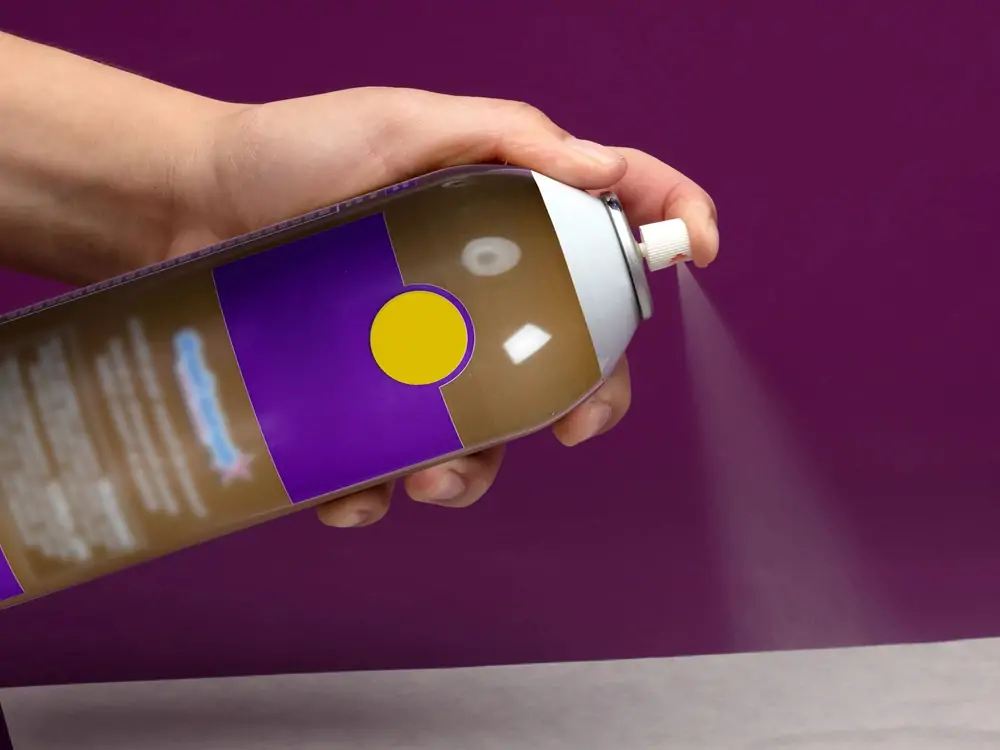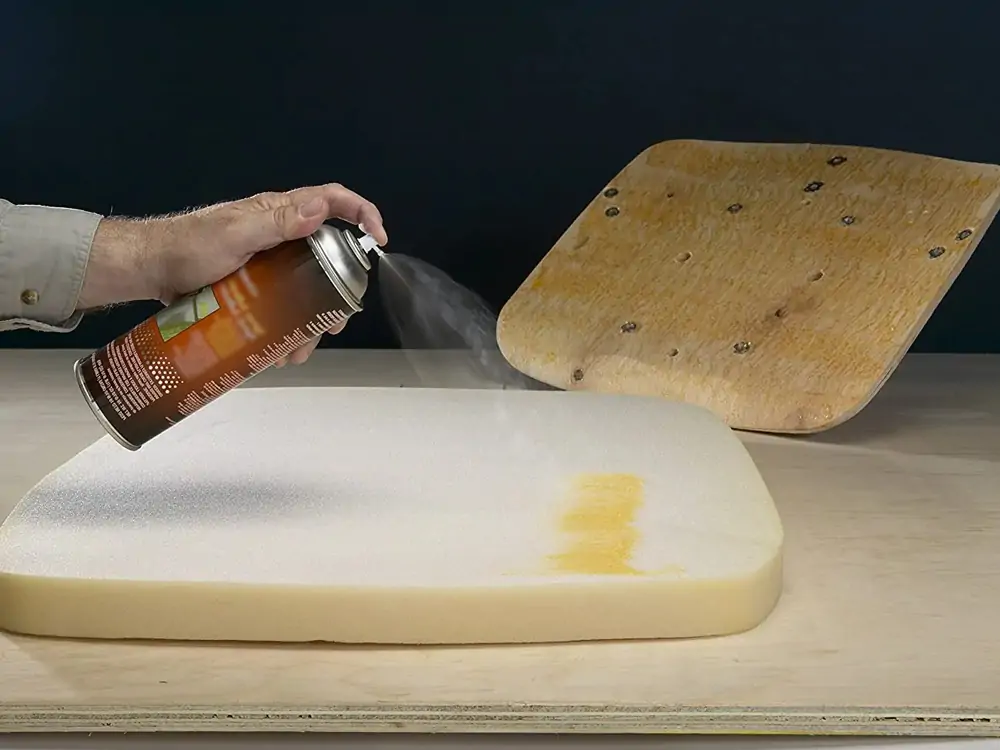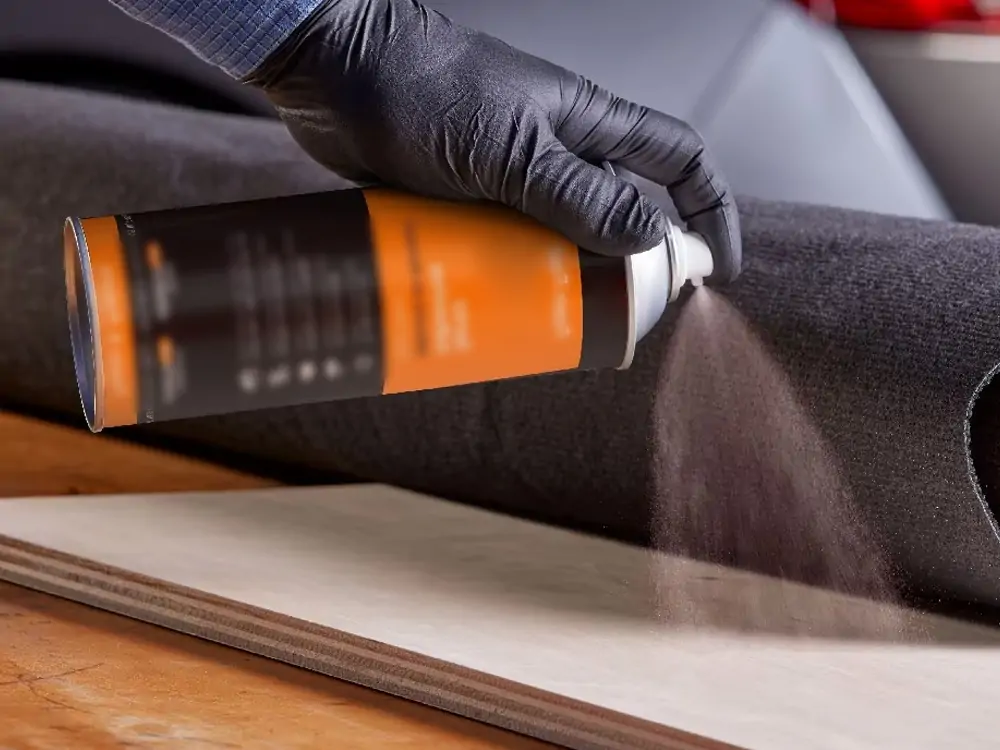Spray adhesives are widely favored for a range of different projects. They range from crafting and upholstery to insulation and automotive applications. They are popular among users for their user-friendly nature and efficient bonding capabilities. Spray adhesives have one key characteristic: tackiness. The duration may differ based on various factors. Professionals and DIY enthusiasts need to know how long a spray adhesive stays tacky. It’s crucial for optimal bonding and achieving desired results in their projects.

Understanding Tackiness in Spray Adhesives
Tackiness refers to the sticky feeling of the adhesive when touched. It indicates that the adhesive is ready to bond. This phase is critical for ensuring a strong, durable bond between materials. The time spray adhesives remain sticky can vary from a few minutes to several hours. The adhesive’s formulation, application method, and environmental conditions influence this range. The bonding process is also affected by the properties of the materials being joined.
The Science Behind Adhesive Tackiness
Adhesive tackiness is a result of the viscoelastic properties of the adhesive material. Under various circumstances, it demonstrates the properties of both a thick liquid and a flexible solid. This duality allows the adhesive to flow and cover the surface when applied. Yet, it’s flexible enough to stick to the surface without drying right away. The adhesive’s specific chemical composition includes polymers and tackifiers. This composition dictates its initial tackiness and how this property changes over time.

Factors Influencing Tackiness Duration
Adhesive Formulation:
Spray adhesives are formulated with various chemicals and resins to cater to specific applications. Some are designed for temporary bonds with a short tack time. Others are meant for permanent applications. They have a longer tack time to allow for repositioning and adjustments.
Application Method:
The amount of adhesive sprayed and the distance from the surface during application can affect how long the adhesive stays tacky. A thin, even layer will quickly become less tacky than a thick, uneven one.
Environmental Conditions:
Environmental conditions significantly impact the rate at which an adhesive loses its tackiness. High temperatures can accelerate the solvent’s evaporation in the adhesive, reducing tack time. Conversely, cooler temperatures slow down this process, extending the adhesive’s tacky phase. Humidity interacts with the adhesive’s composition. This situation is incredibly accurate for water-based adhesives. It affects their drying time and tack properties. Understanding these interactions is crucial for applications where environmental control is challenging. This environment includes outdoor projects and unconditioned workspaces.
Material Porosity:
The porosity of the materials you join affects the drying time of the adhesive. Materials with open structures, like fabric or wood, could absorb the adhesive at a faster rate. This surface reduces tack time. Non-porous materials, like metal or plastic, can make tackiness last longer.
Advanced Adhesive Technologies
Adhesive technologies have advanced. They now make products with specific tack times for different uses. Pressure-sensitive adhesives (PSAs) keep their stickiness when pressed lightly. They are used in various things, like note pads and car trim. UV-curable adhesives are different. They stay sticky until UV light hits them. Then, they dry quickly, giving precise control over bonding.

Types of Spray Adhesives and Their Tack Times
Repositionable Adhesives:
These are designed to remain tacky for longer periods. Users can modify and relocate materials until the bond becomes irreversible. They typically stay tacky for several minutes to a few hours. They can form a bond strong enough to hold materials in place. It’s weak enough to allow for adjustment or removal without damage.
Permanent Adhesives:
Permanent adhesives are formulated for a strong, durable bond. They usually have a shorter tack time. They are formulated to establish a durable or enduring connection between surfaces. Therefore, they can provide a high-strength and long-lasting bond. Once cured, these adhesives are intended not to be removed or repositioned. Doing so could damage the surfaces they are adhered to. They exhibit a high initial tack. This formula facilitates quick and strong bond formation. It reduces or eliminates the need for clamping or holding the bonded surfaces in place.
Specialty Adhesives:
Specialty spray adhesives are designed for specific applications. One instance of their application is in the medical domain, where they find utility in the dressing of wounds. They are also used in electronics for component assembly. These adhesives often have unique tackiness requirements. These adhesives may need to remain tacky under specific conditions or extended periods. They should not lose their adhesive properties. The development of such specialty adhesives involves intricate formulation work. This task guarantees that the stickiness duration matches the application’s requirements seamlessly. It highlights the bespoke nature of modern adhesive solutions.
Industry-Specific Applications and Tack Time
Different industries have unique requirements. These requirements dictate the choice of spray adhesives. One factor is their tackiness characteristics. In the aerospace industry, adhesives must withstand extreme conditions. So, it will require formulations with very specific tack times. These tack times ensure both immediate handling and long-term durability. In graphic arts, repositionable spray adhesives have extended tack times. This benefit allows precise placement of light items, like paper and photos. It does so without damage or residue.
Optimizing Bonding with Tack Time
For best results, it’s essential to understand and utilize stick time effectively.
Surface Preparation:
The surface condition affects the adhesive’s tackiness effectiveness. Ensure that surfaces are devoid of dust, grease, or any other contaminants and are clean and dry. This clean surface will ensure optimal adhesive performance. Even the best spray adhesives can fail to maintain their stickiness. This situation can happen if they are applied to poorly prepared surfaces. Proper surface preparation enhances the initial tack. It also contributes to the overall strength and longevity of the bond. Proper surface preparation can significantly affect the adhesive’s performance and tack time.
Application:
Follow the application guidelines from the manufacturer. They include the recommended spraying distance and quantity. Spread the adhesive evenly in a regulated manner. Doing this will ensure a consistent tack time and optimal bonding.
Innovations in how spray adhesives are used can also affect how long they stay sticky. For example, electrostatic spray technology charges the adhesive particles as they are sprayed. This technology ensures a more uniform and controlled application. So, it can lead to a more consistent tack time. It can also improve bonding efficiency. This function holds particularly true in industrial environments, where precision plays a vital role. Advancements in spray nozzle design allow for adjustable spray patterns and volumes. This design gives users greater control over the thickness of the adhesive layer.
Consequently, it offers users greater control over its tackiness duration.
Bonding Window:
Be mindful of the adhesive’s open time. It’s the period when the adhesive stays tacky and effective for bonding. It is essential to ensure that your tasks are coordinated within this timeframe to establish a robust connection.
Testing:
If uncertain about the tack time, perform a small test to gauge how quickly the adhesive sets. This can help adjust your work pace. It also ensures that the materials are bonded within the optimal time frame.
Troubleshooting and Tips
Extended Tackiness:
If the glue stays sticky for longer than expected, it might be because too much was applied, it’s too cold, or it’s really humid. You can fix this by changing the environment or how you apply it.
Rapid Loss of Tackiness:
This situation may happen in very dry or hot climates. You can use a humidifier or reduce airflow around the working area to make the tack time last longer.
Reactivating Tacky Adhesives:
If adhesives lose tackiness too quickly, heat can reactivate them. Review the product guidelines to determine if this is suggested.
Conclusion
How long spray adhesives stay sticky is important. It affects how well bonding works. You can make sure you get strong, long-lasting bonds by understanding what affects tack time. You should also pick the right adhesive for the job. Whether you work in the car industry, do DIY projects at home, or make art, paying attention to how sticky your spray adhesive is will give you better results. Remember, to use it successfully, you need to prepare, apply, and time your spray adhesive correctly. These things depend on their unique properties.
